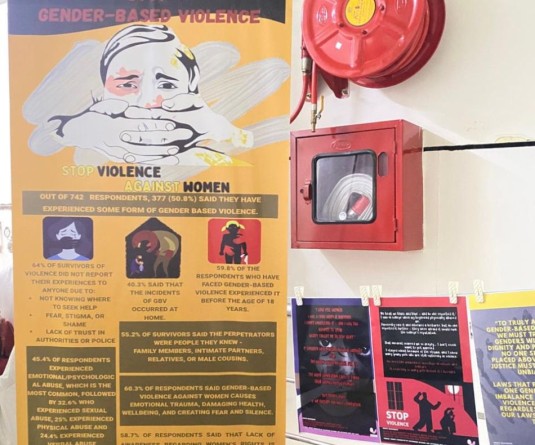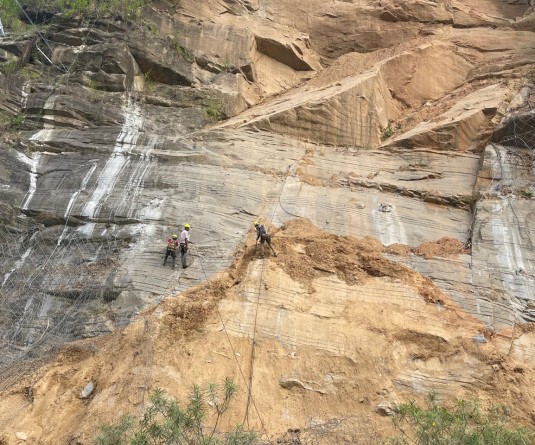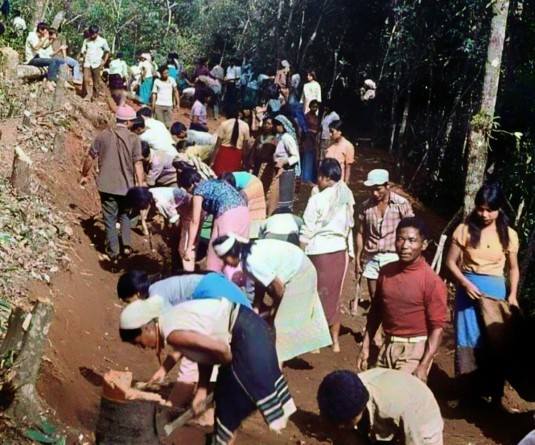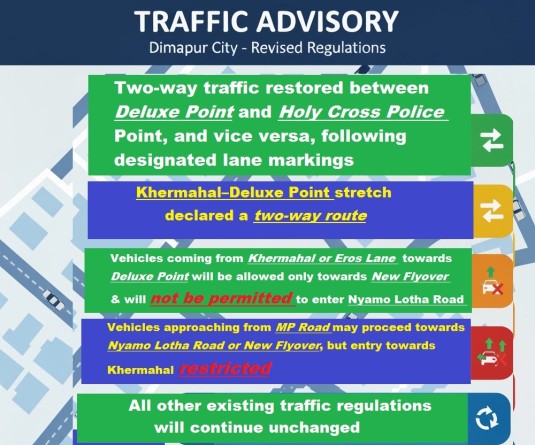
Morung Express News
Kohima | February 20
After four years, the Government High School Diki, Dihoma under Kohima District has received news that six teachers along with a Headmaster will be arriving soon for their upgraded school. For almost four years, GHS Diki held its classes for the Class 9 students in their School Hall while the computer room was a makeshift room for the Class 10 students.
Class 10 was discontinued in 2015 because even after its up-gradation by the Rashtriya Madhyamik Shiksha Abhiyan (RMSA) in 2011, not a single teacher was deployed neither were the constructions begun for the classrooms until late last year. The school is still under construction.
“We had to close down Class 10 because there was acute shortage of teachers,” says Thepfuneilhou Yashü, the former Head Teacher of the Government Middle School while mentioning that the school received directions from the RMSA to start classes right after the upgradation. The teachers in the Middle school had to manage and multi-task classes to teach Class 9 and 10.
In Nagaland, after the introduction of RMSA, 168 schools were “upgraded” under the flagship program starting from 2009 till 2014. From 2009-2010, 35 schools were upgraded under the RMSA scheme, in 2010-2011, 67 schools were upgraded while in 2011-2012, 45 schools were upgraded and finally 21 schools in 2013-2014, informed Nagaland State’s RMSA Mission Director Thejao Vihienuo.
However, the appealing figures are far removed from the pitiable state of many upgraded schools which struggled with no teachers deployed for the upgraded classes or constructions for additional rooms. It is only this year that the RMSA has started deploying teachers along with Headmasters.
On being asked if the school appealed to RMSA on their problems, Yashü stated that verbal appeals were made. Reasons given for the non-deployment and delayed constructions were financial crisis in the Government and the Centre’s direction of selecting teachers with a minimum requirement of 45 percentage in their graduation, which Yashü asserts is a difficult percentage to achieve in backward areas.
In the case of Phokhungri Government High School, Phokhungri under Phek district, a Carpenter Instructor (who is a graduate) was compelled to teach English for Class 9 and 10 because no teachers were deployed. The School, established in 1971 and upgraded and inaugurated on October 18, 2011, has been functioning with only 13 teachers (only 3 graduate teachers) and further had to employ a private tutor for teaching Maths and Science, informed an official source. At present the school has a total enrolment of 128 students. No constructions for the upgraded schools were made, however the school have been informed that constructions will start this year, informs the source.
Despite its limitations, the school thrived and this year, out of its eight students in class 10, five of them are appearing for their matriculation exams.
The school too will be receiving five teachers under the RMSA and Headmaster for the upgraded classes this year.
In the RMSA framework guidelines, funds for constructions are sanctioned for provision of classrooms (at least two sections each for a class), science laboratory, lab equipments, office room, headmaster/principal room, library, girls activity room, computer room, arts and craft culture, toilet and drinking water facilities, development of playground, boundary walls, furniture etc.
The Government High School, Mezoma was set up in 2012 after much discussions and debate in the village which finally decided to upgrade under the RMSA scheme so that the poorer students can benefit from the government school. The High School was officially inaugurated with a foundation stone by the Mission Director of RMSA on February 7, 2012. But no teachers were deployed thus compelling the Village Education Council to hire two private tutors for two years paying them Rs. 6000 each per month, informed K. Kuotsu, Chairman VEC of Mezoma village.
The salaries of the two teachers were derived from the VDB’s grant-in-aid fund. To add humour to the misery of the School, the Drawing Teacher in the middle school was compelled to teach the Class 9 students Science subject due to the teacher shortage since the teacher came from a B.Sc background.
The land for the upgraded school was also purchased in the village but no constructions have started except for some levelling and constructing the road towards the school. The sand that has been kept for almost two years is also of poor quality. There has been no response from the contractor in charge of the construction despite appeals, informs the VEC Chairman. The upgraded classes are likely to be discontinued unless teachers are deployed; meanwhile most of the Class 9 and 10 students have to migrate to Zubza to pursue their secondary studies. The Government High School at Sechü-Zubza does not have hostel facilities. Thus, students from other villages including Mezoma have to rent houses alone to pursue their studies.
One of the main visions of RMSA is to make available, accessible and affordable quality education in secondary schools within a radius of 5 km of any habitation. The vision also ensured to achieve universal access to secondary education (age 14 to 18) by 2017. The distance from Mezoma to Sechü Zubza is 19.5 km, thus the accessibility of secondary school within a radius of 5 km, is a distant dream for the lofty vision of RMSA. “Instead of progressing, our schools are regressing,” states a frustrated teacher at Mezoma.






